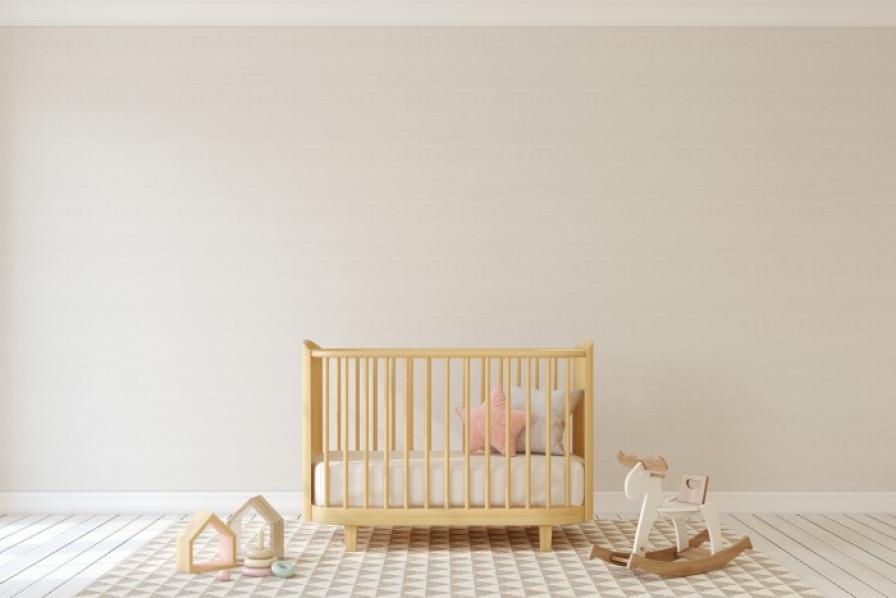Fire Safety Of Domestic Upholstered Furniture: Baby Products Removed
Past President Mathew Freeman provides an update on fire safety of domestic upholstered furniture

I joined the FW/6 committee (responsible for the development and maintenance of British Standards relating to flammability of furniture) in Nov 2023. I represent the BIID membership using my 20 years of industry experience and the BIID Sustainable Specifiers Guide as my primary directive, with emphasis on: Circularity, Natural solutions, Health & wellbeing for people and planet.
Below is an update, structured to provide information as to the decision-making process and help aid you when discussing the implications of your decisions to clients, as you prioritise their health and wellbeing.
The Changes
Coming into force on the 30th October 2025, the Government has taken immediate action to amend[1]the furniture flammability regulations[2] (FFRs) to:
Remove certain baby products from scope to address concerns about exposure to chemical flame retardants of young children, without compromising fire safety. Products include mattresses designed for young children and upholstered baby furniture. View the list here.
Remove the requirement to attach a display label to reduce burdens on businesses.
Increase the time limit from six months to twelve months for enforcement authorities to institute legal proceedings.
History
The current Furniture and Furnishings (Fire) (Safety) Regulations 1988, followed regulations introduced in 1980. Fire deaths had doubled in the previous decade as people slowly became aware of how easily the new polyurethane foam filled furniture was ignited, typically with smoker’s materials. As smoke alarms, less open-flame heating and a reduction in indoor cigarette smoking occurred, these fire deaths declined sharply: today they are less than half the 1950’s level, or a quarter of the 1980 peak.[3 Page 84] This trend continued even in countries with less strict or no chemical fire retardant requirements, some of which improved fire safety outcomes (Environmental Audit Committee (2019), Toxic Chemicals in Everyday Life). The Green Science Policy Institute and the House of Commons Environmental Audit Committee (EAC) pointed to this in comparing international data.
Rationale
Baby products were removed from the 1988 fire safety regulations because:
- The Government acknowledges that baby items are low ignition risk [4] and therefore do not require chemical flame retardants. It is considered acceptable to move to a risk based approach.
- RIdentifies infants and toddlers as uniquely vulnerable to flame retardant exposure via dust and close contact with treated items. Section 5: Flame retardants are known to leach onto dust. Infants and toddlers are particularly vulnerable to these chemicals due to hand-to-mouth behaviours. (House of Commons Environmental Audit Committee. Toxic Chemicals in Everyday Life - 2017)[5]
- Peer-reviewed studies linked flame retardants to neurotoxicity, endocrine disruption, and cancer, particularly in children[6].
New policy prioritises safer design, chemical transparency, and proportionate regulation. In 2014, the Government identified that the regulations did not differentiate between risk levels, leading to unnecessary chemical use in low-risk items such as baby furniture.

What next?
I will be communicating with the BIID membership later in 2025 to present FFR developments and ensure the continued direction of representation is that of our members. If you have any questions or comments on this piece, or relating to furniture fire safety regulations then please contact the BIID and I will review them.
References:
https://www.gov.uk/government/publications/fire-risks-of-upholstered-products
https://greensciencepolicy.org/harmful-chemicals/flame-retardants/
https://www.gov.uk/government/consultations/furniture-fire-safety-regulations-proposed-amendments
https://greensciencepolicy.org/harmful-chemicals/flame-retardants/
Further reading:
Explore new resources from the BIID. Seeing a padlock? Just login or become a member to view.
View the highlights from our 60th anniversary party
We asked Anna Burles: What makes the perfect software?
Discover the smart home technology awards with Platinum Partner, CEDIA
Explore the latest, member-exclusive, templates designed to make your life easier.
University of Gloucestershire wins the BIID Student Design Challenge 2025.





